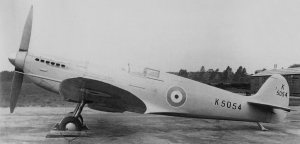I’ve managed to invent (to the best of my knowledge) a new game for aviation fans.
I was in Sydney this week (my six-mile-high commute) and, while I was riding the train to visit a friend, I noticed I was in carriage number N5334. ‘Hmm,’ thought the avgeek in me, ‘that sounds like an RAF serial number.’ It was an off-chance, but I had nothing better to do. So I ran a quick web search (N5334 RAF) on my phone…
Presto! It took less than a second to find my bird – an Avro Anson serving as a ferry aircraft for the pilots of the Air Transport Auxiliary (ATA) in World War II. Photos and all. Here she is:

Source: Flightglobal Historical (1939-1945) Gallery
As I’m sure you’re aware, ATA pilots ferried Hurricanes, Spitfires, Mustangs, Mosquitoes, Lancasters, B17s and more from British factories and repair facilities to active squadrons worldwide from May 1940, freeing up hundreds of frontline pilots. The ATA’s ranks included pilots Amy Johnson, Lettice Curtis, Diana Barnato-Walker, Jackie Cochrane – it’s famous ‘Spitfire Girls’.
As always, many more ‘nameless’ pilots also served faithfully, including men who’ve been completely overshadowed by their infinitely more glamorous colleagues. Altogether, they ferried some 308,000 aircraft, comprising 130 different types.

If you are interested, check out ‘Ferry Pilot’, a cheesy but enjoyable wartime propaganda film that includes part of an incredible Spitfire display actually flown by Supermarine Test Pilot Alex Henshaw.
(I managed to find a DVD copy that’s much better quality, but (sadly for you) I can’t remember how or where from. Sorry.)
Another ‘Annie’
Curiously, the N5334 serial also matched (according to rafweb.org Anson Is that served with the No. 9 Air Observer School, training RAF Navigators and Bombardiers at St-Jean near Quebec, Canada; and No 1 (Observer) Advanced Flying Unit which operated from Wigtown near Dumfries, Scotland.
Ansons were shipped to Canada in the first year of the war (that would be 1939/40, my American friends) to quickly expand the British Commonwealth Air Training Plan (BCATP) – or Empire Air Training Scheme (EATS) in southern climes. This truly enormous plan was launched in 1939 to provide an incredible 50,000 aircrew per year (and for as long as was needed!) to the RAF.
So I’m not sure whether the RAF allocated the same serial to more than one Anson, or whether the aircraft was shipped back across the Atlantic later in the war – although that seems extremely unlikely.
Needless to say, I reached my destination all too quickly. So if anyone can shed some light, that would be great.
And a Cat
Incidentally, N5344 is also worn by a 1969 Grumman G164A Ag Cat (CN 619). After a quick look, it appears to be still registered with this N-number, and domiciled in Dolores, Colorado. Cool.
Round Two: T6508
Two days later I got to try ‘the game’ again on my train ride to the airport for the flight home: Carriage number T6508; and again, it worked.
The superb airhistory UK site reveals that T6508 was a DH82a Tiger Moth (cn 84849), which was shipped from the UK to Southern Rhodesia as part of the Empire Air Training Scheme.

While any details would be all lost but in a dusty archive somewhere, I can tell you that T6508 was struck of charge on 9 February 1943. Accidents were all too frequent in the hot and high conditions of Southern Rhodesia – factor in ab-initio students and a vast, featureless terrain, and it was a perfect storm. So while it’s not exactly T6508, here’s an example of her likely end.
(In this accident, on 23 July 1957, DH82a T8251 (cn 84530) was also damaged beyond repair. © Tony Hawes)
So what’s your number?
Though I say it myself, what a great way to make a train ride more interesting! In Sydney, NSW, at least.

I can’t wait to use public transport again. And I’m bursting with questions. Will it work in Adelaide? Does it work on buses too. How long before I’m riding in something really awesome like a Mosquito or a Mustang? Or something really famous? (Is there even a carriage numbered K5054?)
And most importantly, does this work on mass transit infrastructure around the world?
I hope so! Do let us know what you find yourself in.


Love your work Delta Foxtrot, keep it up.